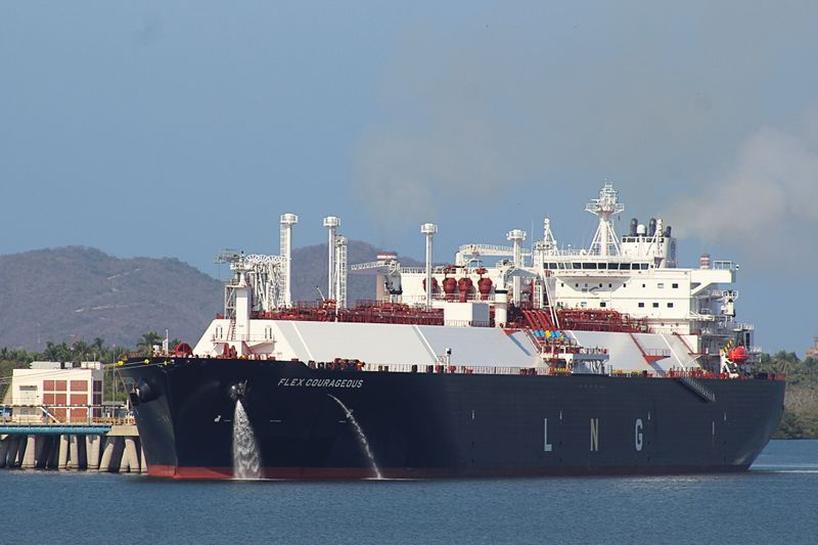RIO DE JANEIRO, BRAZIL – Mexico on Friday, February 19th, began discharging liquefied natural gas (LNG) bought under emergency conditions as supplies through pipelines from the United States rose, easing scarcity that led to power cuts and factory closures at its Northern states.

The tanker Flex Courageous carrying about 162,850 cubic meters of U.S. LNG was unloading at the Manzanillo terminal on the Pacific Coast, Refinitiv Eikon data showed. The government plans to supply the gas to several power plants.
A second tanker, the Seri Balhaf, was scheduled to begin discharging about 151,300 cubic meters of U.S. LNG at the Altamira terminal on the Gulf Coast in the afternoon after bad weather caused delays, an official from the port authority told Reuters on Friday.
At least two more cargoes are expected to arrive from Asia within days, the government said.
U.S. producers are also ramping up natural gas supply to Mexico through pipelines after a cold snap interrupted a large portion of exports this week, mainly affecting Mexico’s spot purchases of gas from Texas.
An executive order by Texas Governor Greg Abbott this week banning out-of-state exports through Sunday was relayed on Thursday to producers by the state’s oil and gas regulator.
It was unclear how much effect Abbott’s order has had on gas supplies. At least one supplier to Mexico said it would follow all state orders, but others seem to have resumed exports when possible to fulfill contracts.
In response to a request for comment on diplomatic tension emerging after Abbott’s order, the U.S. State Department said the government was engaging with Mexican counterparts on range of energy topics.
“The crisis has raised important issues surrounding infrastructure on both sides of the border, and our hope is that we can both build back stronger,” a spokesperson said.Mexico has little capacity to store natural gas, even though its electricity generation mostly depends on the fuel. It has 24 gas supply contracts and 18 transportation contracts to import from U.S. providers, according to state-owned Comision Federal de Electricidad (CFE).
The nation also buys about 30% of the gas it needs for its Northern states through spot purchases from the United States, which according to analysts adds vulnerability to imports.
“That means that without a legal, contractual firm transport agreement, those participants are likely to be bumped out,” said John Hilfiker, senior analyst from S&P Global Platts.
U.S. pipeline gas exports to Mexico rose to 4.9 billion cubic feet per day (bcfd) on Thursday from a 13-month low of 3.8 bcfd on Tuesday. The decline versus the average before the deep freeze, which was 5.7 bcfd, is about 33%, Refinitiv Eikon preliminary data showed.
EXPECTED RECOVERY
Mexico is relying on LNG, coal, fuel oil and nuclear power to boost electricity generation and allow its industrial belt to return to normal production. Automakers in Mexico need natural gas supply restored to reopen halted plants.
President Andres Manuel Lopez Obrador said power to Mexico’s industrial sector is expected to return to normal “soon.”
“We have progressed on solving the problem,” he told his daily news conference. “We are finding LNG, and we are restarting all of CFE’s power plants to secure supply.”
Power outages across Mexico, particularly in the northern manufacturing heartland, may knock about 5% off industrial production this month, according to estimates by independent analysis firm Capital Economics.

